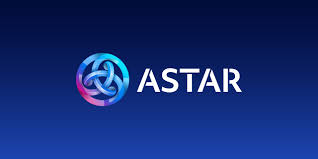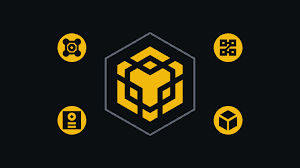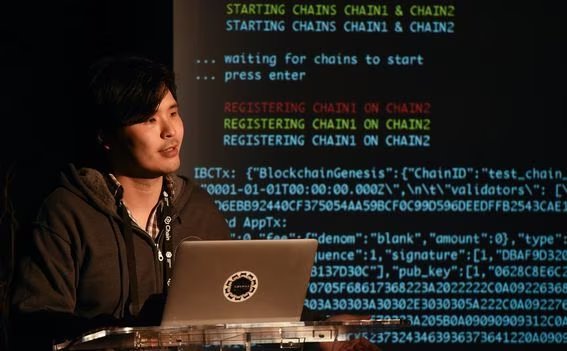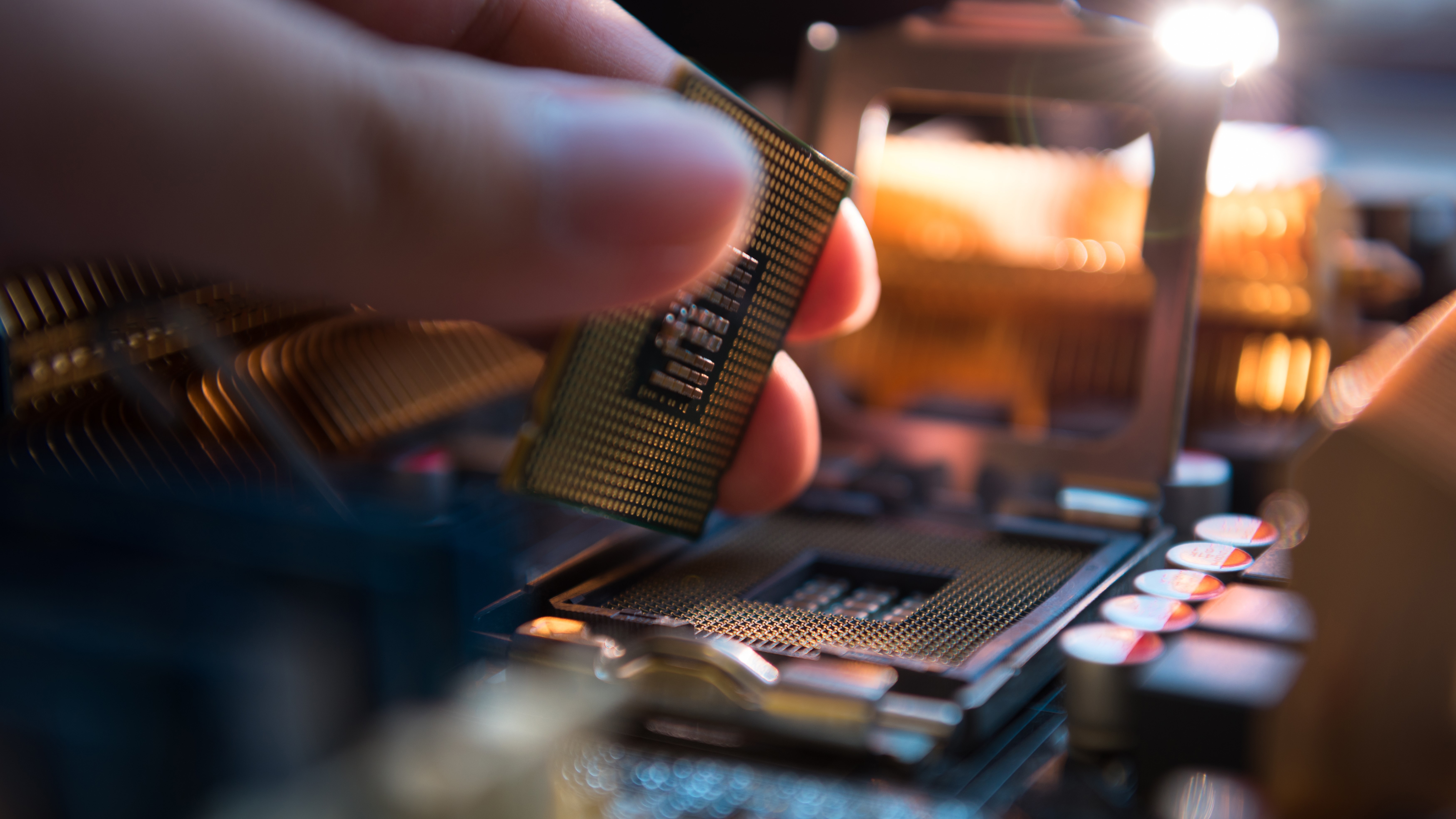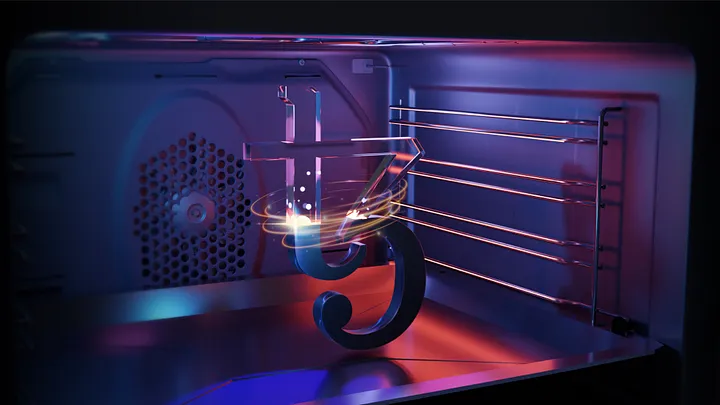TL;DR: With a new update or project being released almost every day, it’s clear the crypto ecosystem is constantly evolving. NEAR has gone through a lot of ups and downs to reach the level it’s at today — but it’s just the beginning. Knowing what brought it here and why it was created will lead you to make better decisions when investing or simply using NEAR.
In this article, we’re gonna dive into the NEAR ecosystem, answer all the $NEAR related questions and even more. Prepare yourself for a history lesson and a journey to the future of NEAR!
What is NEAR (NEAR)?
NEAR is a Layer 1 blockchain created in 2018 by Ilia Polosukhin and Alexander Skidanov. It is a smart contract platform that focuses on being highly scalable. Scalability is defined as the amount of transactions that NEAR can process per second, or throughput. NEAR is one of the few projects who took the route of on-chain scaling.
On-chain scaling keeps all the transactions at the base NEAR chain. The approach is to increase the throughput of the base chain itself. It is generally considered that on-chain scaling provides better security guarantees because. This is because security measures are implemented on one layer, removing complexity along the way. The most popular on-chain scaling technique is called sharding, which is seen as still at an experimental phase.
Sharding splits the entire state of the network into smaller blockchains (called shards) that contain their own independent piece of state and transaction history. In this system, certain nodes would process transactions only for certain shards, allowing the throughput of transactions processed in total across all shards to be much higher.
In 2021, NEAR has initiated its first phase of sharding, called Simple Nightshade. In this initial phase, NEAR Protocol shards the state, but not processing — meaning the blockchain will still be validated by all the network’s validators. The network is split into four shards, significantly increasing the throughput of NEAR.
The current phase introduced Chunk-Only Producers who are responsible for validating parts of the block from a shard. Once this step is completed, both state and processing will be fully sharded, further lowering the hardware requirements of running a block producer on NEAR.
The consensus mechanism that NEAR uses is called Thresholded Proof of Stake, which means that NEAR gets its security from validators that stake $NEAR to secure the chain. This is different from Proof of Work blockchains, where miners replace the role of validators.
Thresholded Proof of Stake uses an auction system to choose validators. Part of its design disincentivizes validators from “pooling”, a mechanism which concentrates resources and centralizes control of the chain. In this case, the large pool of participants (called witnesses) are elected to produce a block during a specific window of time.
The concept of blockchains is not new, and NEAR is one of many such networks. The idea started in 2008 with the release of Satoshi Nakamoto’s Bitcoin Whitepaper. This kicked off the subsequent creation of many different types of networks under the same “blockchain” terminology.
Despite being similar in concept blockchains have all different architectures and use cases. What all have in common — including NEAR — is that they have to be secure. Security is the ability of a blockchain to prevent attacks and penalize malicious actors. This is usually done through their consensus algorithm and the mechanism they use to reach finality. Finality is achieved when a block has been created and is now immutable, meaning that nobody can change the date inside.
Over time many different mechanism have been designed, ranging from Proof of Work, Proof of Stake to novel ones called Proof of Spacetime. Each one hopes to achieve the best way of securing the network they are built for. As noted before, NEAR makes use of type of consensus mechanism we call “Proof of Stake” — or PoS for short.
NEAR’s has been created with the goal of being an alternative to Ethereum. Ethereum has been created in 2014 and introduced the concepts of smart contracts. These are small applications that run inside a virtual machine called the Ethereum Virtual Machine.
The EVM allows for a blockchain to process more than simple token transfers. To give more info, it opened up the possibility to run applications in a decentralized manner. Applications usually run in the cloud or on your computer, so running them on a blockchain was unheard of at the time. This makes them uncensorable (nobody can stop them) and ensures they’re always online — as long as the chain they run on is processing transactions.
NEAR is powered by the $NEAR token, a central part of the NEAR ecosystem. NEAR is an inflationary token due to the way its tokenomics have been planned. This means that new NEAR coins are created with each block and the the total supply increases. The NEAR inflation rate sits currently at around 45.38%% and gets lower every year.
The tokenomics of NEAR specify a maximum amount of 1 billion tokens that will be in existence.
For more details about how you can earn more NEAR by running a validator node at home check out our NEAR Mining & Staking guide. It includes the exact steps and best methods of earning more crypto like $NEAR in 2024 and beyond.
When was NEAR (NEAR) created?
NEAR was created during Ilia Polosukhin and Alexander Skidanov’s work on their artificial intelligence company. Work began on the NEAR chain in 2018, but before that, a couple of important events happened. Most events revolve around the founders of NEAR.
The first meaningful event is when Illia and Alexander co-founded NEAR.ai.
Founded in early 2017, the company was initially exploring program synthesis: the field of automated programs from a human specification. They wanted to create code that would write programs using formal specifications without human intervention. Sadly, the project didn’t move forward. This had to do with their approach, as well as the lack of innovation around the AI industry. It became clear that the company would’t be profitable in the short-term.
The two began to move away from this idea, but along the way, they’ve talked to many developers, some of which were involved in the blockchain industry. That’s when they’ve learned about the difficulties in the industry. Half of the dapps couldn’t be deployed because everything was slow, expensive, and complicated.
Just like most people, Ilia and Alexander first believed that the crypto industry was riddled with scammy projects and useless whitepapers. But looking in depth, they could see the potential to innovate. Their question was why nobody tried to implement better idea. Initially, they thought the problem was speed just like everybody else did, but it was just one point of the argument.
They started talking to shareholders and figured that blockchains have two main problems. The first one was the high entry barrier for developers. Most smart contracts were written in Solidity, a niche programming language developed by Ethereum. The few who learned Solidity had a big edge, and most programmers could see higher returns by learning code used by big tech companies. If blockchain were to gain adoption among builders, the entry bar had to be low.
The second problem was the clunky user interface. Even an experienced user had to jump through many hoops to make a transaction. The team counted at least 30 steps before a first-time user could buy a CryptoKitty. Some of the steps required to install MetaMask, create a key, write down the seed, go to an exchange, complete KYC, and then wait for five days until they can buy ETH. All that just to buy an NFT. It was clear that for the average Joe it was too difficult.
Another meaningful event was the moment NEAR.ai turned into NEAR — the blockchain.
While developing their AI theory, Ilia and Alexander started to look deeper into how smart contracts work. They began looking into the available blockchains to find one that matched their needs and could not find one. They were convinced that a new approach could help blockchains scale to the level where it can serve global use.
Driven by a lack of reliable Proof of Stake implementations, they were looking to create an energy efficient system as secure as Proof of Work. This is how NEAR and Thresholded Proof of Stake was born.
What the NEAR team created can be categorized as a new consensus protocol. This is due to its internal mechanics, implementing some novel methods of achieving finality. Until that point, 2 main consensus protocols existed, Proof of Stake and Proof of Work. An important difference is that Thresholded Proof of Stake is based on locking up tokens, same as classical Proof of Stake, but establishes fairer reward distribution.
To solve the issues they saw and provide a system that is scalable and has instant finality, the NEAR founders had to come up with a new solution. This solution is known today as the NEAR protocol, powered by the Thresholded Proof of Stake consensus protocol.
Who created NEAR (NEAR)?
NEAR was created by Ilia Polosukhin together with Alexander Skidanov after leaving Google. They work on the underlying protocol that powers NEAR along with the rest of the NEAR members.
Ilia Polosukhin is a computer scientist born in Kharkiv, Ukraine. He worked as a Google engineer and now serves as the CEO of AVA Labs. He studied at Kharkiv Polytechnic Institute between 2011 and 2013. He then completed his Master’s Degree in Applied Math and Computer Science.
As young as 10, Ilia was passionate about sci-fi and technology. In his free time, he wrote sci-fi books and learned to code. As he got through college, he saw the emergence of deep AI with search engines like Google and was determined to pursue this field of study.
Ilia Polosukhin started his career working as a research scientist at Google, where he managed a team of Deep Learning and Natural Language Understanding Researchers. He was an author of several notable research papers, mostly on neural networks.
One of his most important projects was developing TensorFlow, an end-to-end machine learning program. To this day, TensorFlow is one of the most used machine learning frameworks. To give more info, Ilia was teaching the algorithm to classify texts such as blog, email, tweets, and so on. In 2015, the AI trend was growing quickly, but in 2016 the trend fizzled out.
In 2017, Ilia left Google to create his own company, NEAR.ai. He co-opted his old friend Alexander Skidanov, who he knew since he was living in Kharkiv. The two took the path of developing AI, despite the field’s lack of popularity. Eventually, NEAR turned into a blockchain project.
During the company’s first days, Ilia Polosukhin and Alexander Skidanov were the only engineers. The first employees were taking serious risks. Now the NEAR team counts 40 people, some of them with impressive resumes. Two guys on their team have each won the ICPC World Finals twice, an extremely rare achievement. For context, the ICPC is the oldest, largest, and most prestigious programming contest in the world. The two team members are Mikhail Kever and Evgeny Kapun.
Alexander Skidanov now serves as the NEAR co-founder. He studied at Izhevsk State Technical University (ISTU) between 2007 and 2009, where he completed his Master’s Degree in Computer Science. In 2008, Alexander also made it to the ICPC World Finals, but he ended on the third place. This success propelled his career, and the next year he started working abroad.
Alexander Skidanov started his career working at Microsoft as a software developer. He then moved to SingleStore(formerly MemSQL), where he learned about working with SQL databases. He first worked as a senior software engineer before advancing to director of engineering. In 2017, he left the company to become the co-founder of NEAR.ai along with Ilia Polosukhin.
Looking at the blockchain space back then, most dapps was difficult to use. Despite a modest userbase, blockchains were processing transactions slow, as most scaling techniques were being conceptualized, but not yet applied. The team was networking with several shareholders who suggested looking into the field of generating smart contracts for Ethereum. Engineers at the core, Ilia and Alexander took the challenge of developing NEAR into a blockchain project.
Their motivation was to create a more scalable blockchain that could easily accommodate developers from different backgrounds. A challenge at the time was the lack of infrastructure. If NEAR was to succeed, they would have to build everything from scratch.
The first step was to create their own consensus mechanism and engage with the blockchain community for feedback. Their research had led them to create a modified version of Proof of Stake, called Thresholded Proof of Stake. Learning from Ethereum’s version of PoS, the team created a new consensus that prevents the “rich get richer” paradigm with staking.
The proof of concept for NEAR had the TPoS consensus as well as a scaling technology called sharding. Inspired from Ethereum’s vision of a chain split into multiple smaller chains, NEAR designed a different implementation that in theory, relied less on centralized servers.
The wider vision was to integrate multiple languages to the NEAR framework in a way that developers could plug their Dapp directly to the blockchain, without going through learning Solidity or worrying about the underlying infrastructure.
The roadmap for NEAR would include sharding, smart contracts, community governance, and free access to infrastructure tools. To advance their concept, Illia Polosukhin and Alexander Skidanov pitched their idea to VCs. With fresh funding, Illia Polosukhin and Alexander Skidanov went on to expand their team and turn their idea into a marketable project.
How is the NEAR (NEAR) token used?
The NEAR token is the native token for the NEAR network. Most assets in the NEAR ecosystem are denominated in NEAR, which makes it the default unit of account.
NEAR is the fuel that powers transactions and block creation on the NEAR chain. We sometimes refer to it as “gas”. Its primary use case is securing the network and keeping actors aligned to the same principles. Making a transaction on the NEAR network requires a small fee in $NEAR, usually between $0.01 and $0.05.
Because NEAR has a quick time to finality and processes more transactions per second the gas fees quickly add up. This small fee is paid by users and goes to validators for doing their work.
Recently, NEAR has announced its plans to create an on-chain governance structure that will give $NEAR the function of a governance token.
NEAR is currently listed on multiple exchanges. The major ones are Binance, Coinbase and Kraken. If you want to skip ahead and learn how to earn more NEAR by running a validator node at home check out our NEAR Mining & Staking guide. It includes the exact steps and best methods of earning more crypto like $NEAR in 2022 and beyond.
Who is developing NEAR (NEAR) now?
Development on NEAR started in early 2018 by a team who has the same name. The company was founded in 2017, and handles the development of the NEAR blockchain and protocol. Besides handling the development of the core protocol, it is also tasked with promoting the blockchain and fostering global adoption.
Parts of the codebase was written by external developers, making open source contributors pivotal to developing the NEAR reference client. Open sources contributors can access the protocol’s code on GitHub and they are free to fork the code. Currently, their nearcore repository has more than 100 core contributors and is being used by 1200+ people. On their GitHub is also where you will find the documentation for how to create an app on NEAR.
2 years into the protocol’s development, the team decided to launch NEAR Foundation, a non-profit company headquartered in Switzerland. The Foundation Council is made of 3 key people: Illia Poloshukin, Richard Muirhead, and Mona El Isa.
NEAR Foundation is tasked with offering support for startups and making sure projects follow the principles of the protocol. They are also play a role in the governance structure and is helping to test the network and stand up its initial nodes. Importantly, the Foundation doesn’t gain any tokens by running nodes and they are intended to be temporary.
Like any successful blockchain network, it is essential that NEAR amasses a strong community of validators that can maintain the network. To attract validators and builders, NEAR Foundation started offering grants. The initial sponsorship budget is $1 million, but it was quickly raised to $800 million. Funds are allocated towards open source and public goods, startups, education initiatives, and bounties.
Besides offering grants, NEAR Foundation is also looking to expand its team. If you are interested to become a contributor to the protocol, you can participate in online events such as Hackathons or in-person events such as NEAR|CON.
As part of its educational onramp, the team launched NEAR Academy, a course built for web2 developers looking to learn about blockchain concepts and code.The learning experience includes diagrams, code samples and links to resources for further study. A certificate of completion is issued for anyone who completes the course.
For validators, NEAR had successfully launched its “Staking Wars.” The event is composed of technical challenges that participants are encouraged to solve. In exchange for solving tasks, participants are delegated NEAR tokens. Validators with extra hardware capacity can help NEAR test its sharding feature and get a chunk of the 4.5 million $NEAR reward pool.
Governance of the NEAR Protocol is done off-chain. This means token holders have a say in the direction of the protocol, but the actual implementation is done by the author of the proposal in collaboration with the core team.
Token holders can vote to modify the core protocol specification, APIs, contract standards, processes, and workflows via NEAR Enhancement Proposals (NEPs). After a proposal is issued, the Foundation and the community reviews it, and if it passes the minimum approval threshold, it gets to be implemented. So far, the NEAR community has voted on 10 proposals that await to be implemented.
One of the challenges for NEAR as an ecosystem is that it needs to reach full decentralization. This achievement is considered the Holy Grail for the long-term health of every blockchain. To speed up the efforts, NEAR is is forming a working group to set standards for self-governance.
The initiative, called the Near Digital Collective (NDC), is aimed at moving governance on-chain and it is akin to a Decentralized Autonomous Organization. The NDC will work to create and ratify a set of shared values and basic rights for all community members. The collective will also get involved by setting up the frameworks and plans, and establishing a legal structure.
What are the latest updates on NEAR (NEAR)?
NEAR in 2019
2019 was the year when NEAR started promoting its blockchain. At this point, the team had open sourced the client and worked with a small community of developers. Most of their prior work was in the research area, collaborating with the Ethereum Foundation on the sharding concept and exchanging ideas.
NEAR started the journey by building the application layer so developers could make apps even before everything on the blockchain layer was production-ready. This decision was to gather as much feedback as possible. Even if some dapps failed, it gave the team time to reiterate.
Ilia Poloshukin participated in many meetings and events to spur interest around NEAR. He was interested in attracting blockchain engineers as well as app developers. He also started writing blogs, explaining the concept of NEAR. Both co-founders were on a tour de force, getting involved with as many builders during the day, while advancing the consensus algorithm and sharding during the night.
During one of those conferences, Alexander Skidanov explained a new scaling mechanism NEAR was working on, Nightshade. It is a sharding method that could scale indefinitely with the number of nodes participating in the network consensus. On July 1, the team deployed a testnet version of Nightshade.
Meanwhile, the networking started to pay off and NEAR secured $12.1 million in backing from VCs including Coinbase, Pantera Capital and Multicoin. On the same date, NEAR announced it was opening its doors for a beta program. From this moment on, NEAR was itching from a research project to a living, thriving decentralized ecosystem.
The mainnet was scheduled for the end of the year, so the team prepared to onboard validators via a competition. In exchange for running a validator node and giving feedback, validator nodes were promised future token rewards when the mainnet starts. More than 40 people joined the competition, which helped the team solve important issues.
Contrary to the expectations, the mainnet was delayed in order to patch several other issues that emerged during the testnet. The community wasn’t discouraged, however. By the end of 2019, NEAR had built a global community. Founders engaged with early contributors at over 50 meetups, and established many relationships with projects in the crypto space.
NEAR in 2020
2020 was NEAR’s mainnet year. With the release of 4 Foundation running nodes, developers could apply to deploy Dapps on the NEAR blockchain. “MainNet: POA” was still limited in some functionalities, representing the first step towards a multi-phase rollout.
Most blockchains are focused on delivering the technical layer, which provides the bare metal networking, virtual machine and data storage. NEAR took the opposite road of implementing tooling and functionality first. With this approach, developers were able to build apps on NEAR before the technical layer was ready. Participation was limited to Foundation Developer Program participants. Practically, Phase 0 was still working as if in closed beta.
Phase 1 would involved a transition to a decentralized group of third party validators, while Phase 2 opened the network to completed decentralization. Applications would have no restrictions on their functionality and NEAR tokens would be free to be transferred.
As the mainnet was getting closer to launch, NEAR announced the Validator Advisory Board. This board is run by a selected group of professional validators who, over time, become the key voices in the technical governance of NEAR Protocol. Initial members included: Hashquark, Huobi Pool, Sparkpool, Stake.fish, OKEx Pool, and 9 other mining pools.
An interesting feature worth mentioning is the NEAR Drops. To make onboarding users much simpler, NEAR Drops lets users send others a link with a certain amount of NEAR attached to it. This allows dapp developers to onboard users and pay for their NEAR account, whether they have an account or not. After the user clicks on the link, he would have access to his NEAR tokens as well as his own non-custoidal account.
On August 13, NEAR competed its token sale in less than two hours. The team raised $33.6 million from 1,500 participants, who collectively purchased 100 million NEAR tokens. Due to the massively oversubscribed sale, the remaining 6000 subscribed participants were offered the chance to buy up to 3000 $NEAR at the original sale price.
On August 19, NEAR launched its first bridge, the Rainbow Bridge, to connect the Ethereum and NEAR blockchains. It is a trustless bridge that was open source, meaning anyone could fork the code. This piece of infrastructure represents one of the most used services on NEAR.
On October 21, NEAR announced its Phase 1 rollout which made staking open to the general public. To make things more interesting, the team pledged 12 million $NEAR to the first 30 ecosystem validators that joined. The beginning of public staking led to the protocol becoming more decentralized.
The degree of decentralization on NEAR is arguable. Validators are selected based on the amount of tokens staked. Under these circumstances, only 73 validators are eligible to participate in consensus. This has been an issue with the project, but it hasn’t affected its image.
NEAR in 2021
2021 was NEAR’s best year to date, reaching an all time high of $20.42. This was heavily influenced by a few key events and updates.
The biggest catalyst was the launch of the Rainbow Bridge. The dapp launched with a user-friendly interface and low fees. From the first day, thousands of users bridged their assets from NEAR to Ethereum and vice versa. The first token integrated have been stablecoins (Tether, DAI, TUSD), wrapped assets (WBTC and WETH), DEX tokens (1INCH and UNI), lending tokens (AAVE and COMP), and service company tokens (HT and CRO).
The Rainbow Bridge launch marks an important first step in NEAR’s interoperability vision. Because the Rainbow Bridge is a generic protocol for communication between smart contract chains, it can be tuned to work with other chains and open up further synergies.
The next major step in NEAR’s interoperability roadmap was be the Ethereum Virtual Machine (EVM), which was scheduled to launch in Q2 of 2021. EVM support will provide a fully compatible environment for developers to launch existing Ethereum code on NEAR.
Another important event was the release of AURORA, a service for migrating Ethereum native dapps to the Ethereum with minimal changes. To make things more straightforward, the base currency of Aurora is ETH. On the backend, ETH tokens are converted to $NEAR in order to pay for the protocol fees.
After almost 2 years of work, NEAR announced the deployment of Nightshade. With the network approaching 300K daily transactions (5% of the total capacity), the team wanted to start the transition towards sharding early on. During Phase 0, the state will be sharded, but not the processing. This means that the safety guarantees remain the same.
Phase 1 plans to introduce chunk-only producers, who only validate one shard. Because they neither produce blocks nor contribute to the approvals, the security of the chain is not affected. The next 2 phases were scheduled to happen in 2022.
NEAR in 2022
The current year has been a powerful one for NEAR. With the release of Nightshade, NEAR is on track to become one of the most scalable decentralized blockchains in the industry.
On June 30, the team announced its Phase 1 was opening to validators. The NEAR Network is currently secured by 100 validators. The next step was to onboard validators to become Chunk-Only Producers, which means validating a single shard. What’s cool for Chunk-Only Producers is that they can run their validator node on a less demanding machine, such as a 4-Core CPU, with 8GB of RAM and 200GB SSD of storage.
Once the Chunk-Only Producer is available on NEAR mainnet at the end of Q3, NEAR plans to onboard an additional 200-300 validators. This, combined with a lower barrier to entry (minimum stake) for validators, is a win for the NEAR network as it moves toward a more scalable future.
On the adoption front, NEAR Protocol partnered with leading web3 infrastructure provider Infura. The partnership welcomes Ethereum developers into the NEAR ecosystem. Infura developers will now have access to the full development experience on NEAR, as well as the tools and resources at their disposal. In the meantime, NEAR Wallet team announced that they are spinning out to become its own entity, transforming into a multi-wallet portal.
NEAR is in a constant growth cycle, and network participants like us can earn more $NEAR without too much hassle or technical knowledge, right from the comfort of our homes.
Learn how to do that in our NEAR Mining & Staking guide, which includes the exact steps and best methods of earning more crypto like $NEAR in 2024 and beyond.




































